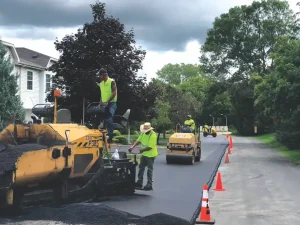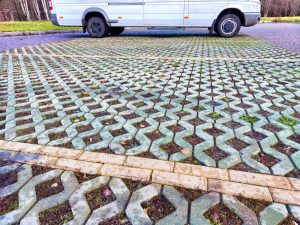That aerosol painting of a psychedelic butterfly certainly is colorful, but it obviously won’t fly on your office building.
Graffiti has become an increasingly prominent means of expression throughout urban, and even suburban, society. If unsolicited, it is also, unquestionably, an example of vandalism.
Graffiti removal, too, can be an arduous and unenviable task. Before attempting to wipe the slate clean, consider the following three tips.
• The sooner you get started, the better. If possible, get to work within 48 hours of the graffiti’s initial appearance. Paint is far easier to remove before it has been absorbed into a surface. Commercial property owners are encouraged to have supplies – such as paint, wire brushes, and solvents – at the ready, so that instances of defacement can be treated immediately. Prompt removal is also strategic, as it sends the message to vandals that graffiti is not welcome in any way.
• Different surfaces will require different treatment.
– Treat wood with mineral spirits, unless the wood is weathered. In that case, the usage of chemicals could cause the graffiti paint to be driven further into the wall or structure. Pressure washing may be in order.
– For glass surfaces, a razor blade has been shown to be the most effective measure. Hold the blade at a 30 degree angle and scrape downward.
– When working with metal surfaces, first apply small amounts of paint thinner or store-bought solvents, or try steel wool or light sandpaper.
– While its usage is telltale, a wire brush can be extremely powerful tool for removing a vandal’s message or design. It can be used on surfaces including telephone poles, curbs, and concrete, among others.
– Graffiti on rough and porous surfaces, such as cinder blocks and red brick, can be incredibly difficult to remove, and treating with solvents or steel wool often leaves a faded reminder of the vandal’s work.
– Pressure washing offers a high success rate, and is recommended for all surfaces other than plastic and glass. Sandblasting, too, can remove graffiti from brick and wood surfaces, but should be performed by a professional, due to the risk of etching to the surface.
– If all else fails, painting over the surface may be the safest, and most efficient, option.
• Exercise safety. Solvents are hazardous. Protect your eyes against them, as well as dust and paint, by wearing safety goggles whenever you are working. Consider a respirator instead of a dust mask. Make sure to read product labels so that you know what to do in the case of an accidental injury or ingestion, and are aware of how to discard of materials properly. Remove flammable rags from your car and garage.
Sadly, graffiti removal is sometimes an occupational hazard for commercial property owners. You can, of course, do it yourself, but why waste precious time scraping away someone else’s paint? Hire a specialist. Pro-Pave, Inc. offers commercial property maintenance services, including restoration and emergency repairs, and graffiti removal is directly in our wheelhouse. Call us today at (703)-433-9500.





